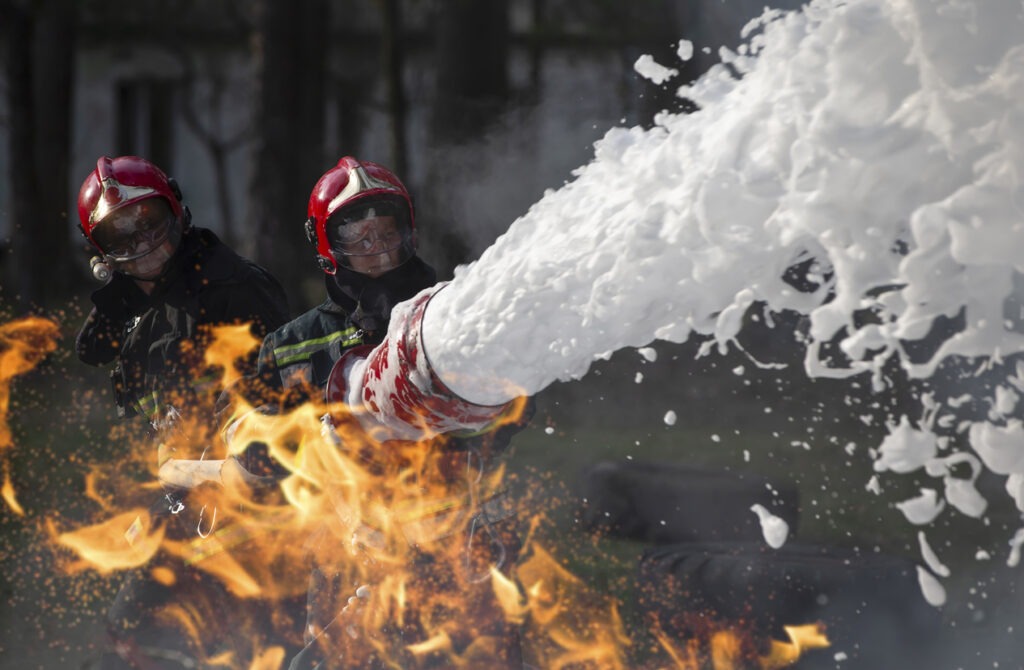
A PFAS compound known as PFBA which is found in firefighting foam has been associated with severe COVID-19 by a Danish study now in the peer review process. The study found that elevated plasma-PFBA concentrations were associated with 2.19 times the increased risk of developing severe COVID-19.
“Given the low background exposure levels in this study, the role of PFAS exposure in COVID-19 needs to be ascertained in populations with elevated exposures,” the study concluded.
The researchers obtained plasma samples from 323 subjects between the ages of 30 and 70 with a known SARS-CoV-2 infection.
“Presence of detectable PFBA in plasma showed the strongest association with the severity of the disease,” the researchers found, saying that this finding “may at first seem surprising” since PFBA has a short elimination half-life in the blood.
“However, in tissue samples from autopsies, PFBA is the only PFAS that is substantially accumulated in the lungs,” the researchers noted, adding “given the persistence of the PFASs in general, the unique retention of PFBA in lung tissue may offer a clue to interpreting the findings in this study.”
“It’s probably what’s in the lungs that counts because that’s where the big COVID battle is fought,” said principal study author Philippe Grandjean.
The researchers note that the study results are “parallel” to findings regarding “other environmental toxicants” and “air pollutants,” suggesting a need to inspect the impact of occupational and environmental exposures on the severity of COVID-19.
PFBA causes thyroid and liver changes, as well as delayed eye opening, decreased cholesterol and decreased red blood cells in animal experiments, according to the Minnesota Department of Health.
Grandjean has done research showing that increased PFAS levels in children was associated with a weaker response to vaccines, and he fears this will happen with the COVID-19 vaccine.
“I would think what we’ve seen before is very likely to happen again,” Grandjean said, adding that people in communities with high levels of PFAS because of industrial contamination “may need more than the 1 or 2 shots recommended for everyone else because their antibody production may be suppressed.”
Some PFAS chemicals in firefighting foam, including at least PFOA, may cause cancer in humans. A 1983 study involving firefighting foam manufacturer 3M found that PFOA was associated with a higher rate of testicular tumors in rats. Lawsuits filed by people who have developed cancer after being exposed to firefighting foam accuse firefighting foam manufacturers of knowing their products pose a cancer risk and not warning the public about the risk.

